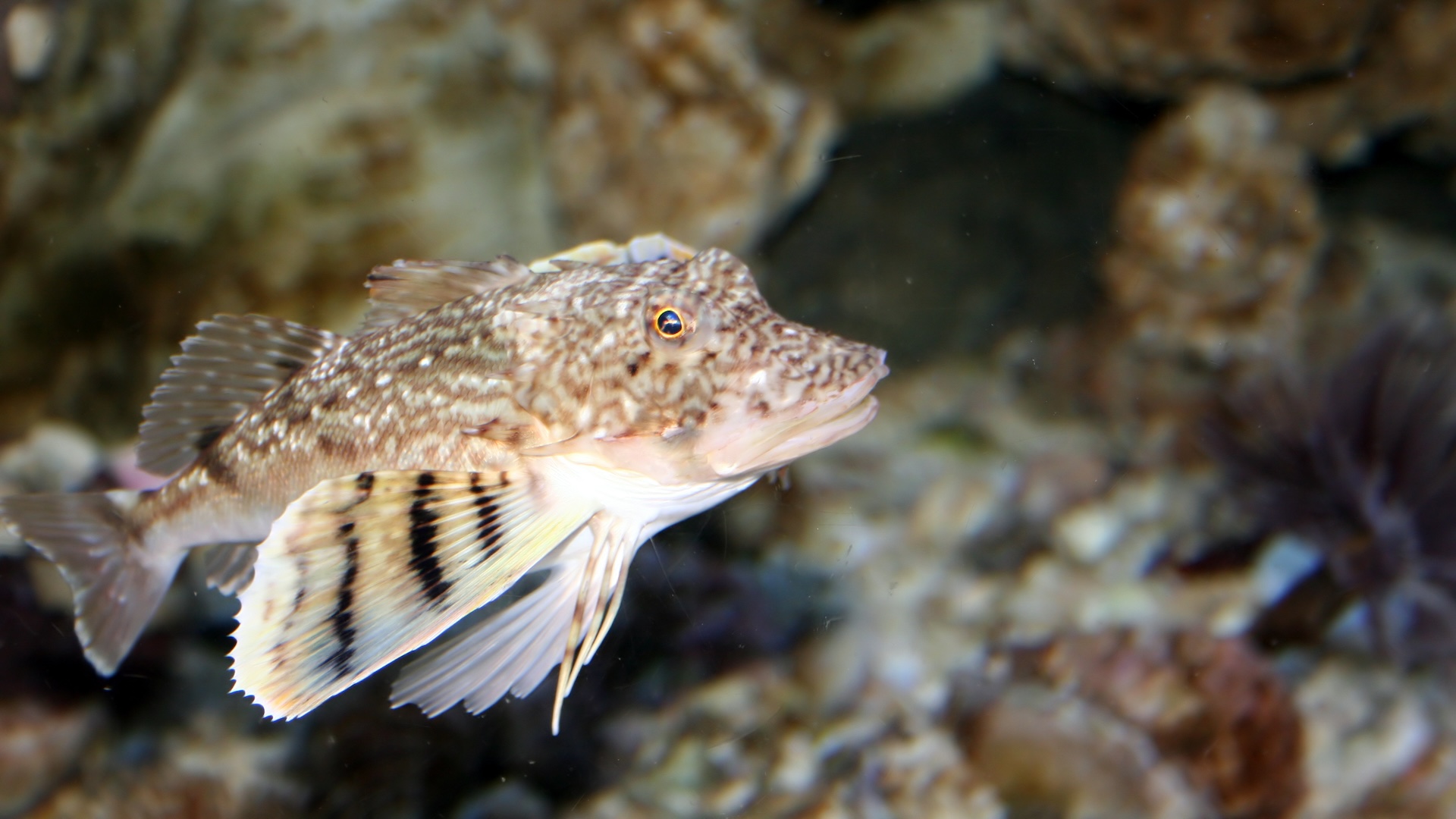Northern sea robin: The bizarre fish with crab legs it uses to taste the seafloor
The northern sea robin is a strange-looking fish with legs that it uses to "taste" the seafloor.

Name: Northern sea robin (Prionotus carolinus)
Where it lives: The shallow waters of the western Atlantic, from Nova Scotia to Florida
What it eats: Shrimp, crabs, squid, worms and small fish
Why it's awesome: Northern sea robins are weird fish with big, spiny heads; bright-blue eyes; two giant wing fins; and six crab-like legs.
It's these little legs that make sea robins so unusual. Other sea creatures follow these fish around because they are so good at finding and digging up buried food — but until recently, scientists didn't understand what made northern robin fish such skilled foragers.
In two studies published in 2024, researchers revealed that northern sea robins' legs act like tongues, allowing the fish to taste their surroundings for signs of food.
"This is a fish that grew legs using the same genes that contribute to the development of our limbs and then repurposed these legs to find prey using the same genes our tongues use to taste food — pretty wild," study author Nicholas Bellono, a professor of molecular and cellular biology at Harvard University, said in a statement.
Sign up for the Live Science daily newsletter now
Get the world’s most fascinating discoveries delivered straight to your inbox.
The scientists found that northern sea robins can detect and uncover ground-up mussels using papillae that cover their legs. Papillae are small sensory structures, which in humans are found on the upper surface of the tongue. The researchers discovered that northern sea robin papillae have taste receptors and touch-sensitive neurons, enabling the fish to use their legs to taste the ground to find food.
In one of the studies, the researchers grew northern sea robins from embryos in a lab to watch their legs develop. They found that the legs grew from the pectoral fins, separating from the rest of the fin rays during development. The legs are controlled by distinct walking muscles at the base of the legs and are shaped like shovels to help the fish dig.
Although all sea robin species have legs, not all are adapted for digging and tasting, the team found. "We were surprised to see how much sea robins differ from each other in sensory structures found on the legs," study co-author David Kingsley, a developmental biologist at Stanford University, said in the statement. "The system thus displays multiple levels of evolutionary innovation from differences between sea robins and most other fish, differences between sea robin species, and differences in everything from structure and sensory organs to behavior."
But northern sea robins' tongue legs don't always lead to a meal. After the northern sea robins dig up their dinner, the fish following them often swoop in and steal their food, in an act known as kleptoparasitism.

Hannah Osborne is the planet Earth and animals editor at Live Science. Prior to Live Science, she worked for several years at Newsweek as the science editor. Before this she was science editor at International Business Times U.K. Hannah holds a master's in journalism from Goldsmith's, University of London.









